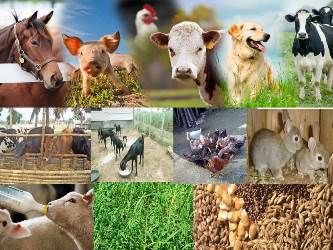



Received: 01-Jul-2022, Manuscript No. GJASLPAB-22-73849; Editor assigned: 04-Jul-2022, Pre QC No. GJASLPAB-22-73849 (PQ); Reviewed: 21-Jul-2022, QC No. GJASLPAB-22-73849; Revised: 29-Jul-2022, Manuscript No. GJASLPAB-22-73849 (R); Published: 05-Aug-2022, DOI: 10.35841/2408-5499.22.10.169
When breeding superior female dairy animals, Multiple Ovulation and Embryo Transfer (MOET) Technology is employed to boost fertility. Typically, a superior female dairy animal will only produce one calf per year. However, employing MOET technology, a cow or a buffalo can produce 10 to 20 calves every year. To produce superovulation in an exceptional cow or buffalo, hormones with FSH-like activity are given. Instead of producing one egg as they would ordinarily, the female produces multiple eggs when the hormone is working on the female, then they produces numerous eggs. The super-ovulated female is inseminated 2-3 times at 12-hour intervals during estrus, then on the mean seventh day after insemination, thier uterus is flushed to remove the growing embryos.
Embryo quality is evaluated under a microscope after embryos and flushing medium are collected in a specific filter. Good quality embryos either saved and kept for transfer in future or put fresh into recipient animals around seven days post heat date. This means that from a superior dairy animal, several calves can be born each year.
One of the reproductive technologies necessary to boost animal output is multiple ovulation and embryo transfer. Four cows were chosen as donors and eleven cows were chosen as recipients in this case study. For Multiple Ovulation and Embryo Transfer (MOET), both donors and recipients had through the same processes and steps, such as cow preparation, synchronisation, and where only donor cows adhere to the superovulation protocol.
The embryos from artificially inseminated cows were graded and flushed. One of the four cows that were chosen as donors was pregnant, and only two cows actually generated any embryos. The embryo collection recovery rate was 70.1%, and out of 13 embryos (including unfertilized eggs), 84.6% were deemed to be of good quality and appropriate for embryo transfer. Overall findings revealed a 62.5% pregnancy rate, with five of the eight recipients of the treatment being found to be pregnant.
Within the same range period, oestrus synchronisation occurred simultaneously in donors and recipients. The timing of the oestrus is one of the most crucial aspects of embryo transfer. Where recipient oestrus was discovered 12 hours after the donor's, almost all commercial facilities that underwent the process revealed a noticeably lower pregnancy rate.
It was amazing that when the embryos from one donor (ID 415) were transferred to these recipients (ID 666 and 668), they did not become pregnant. This issue can be brought on by the standing heat delay that occurred 36 hours after CIDRS removal. As a result, fewer embryos were produced, and only two of them were deemed suitable for recipients. During the execution of the procedure, there was a source of error. One of the recipients had its CIDRS device unfastened, which led to the gadget's loss and inability to be found. This receiver cow was discovered to be pregnant and to be transferred with the other recipients.
Due to misinterpretation of behavioural and physiological indications of oestrus, heat observation may also be problematic. By properly preparing donors and receivers in terms of selection and history, this MOET programme can be improved. This study suggests keeping a journal to record oestrus indications. Additionally, it would be helpful to understand cow physiology and behaviour in order to correctly interpret oestrus indications.